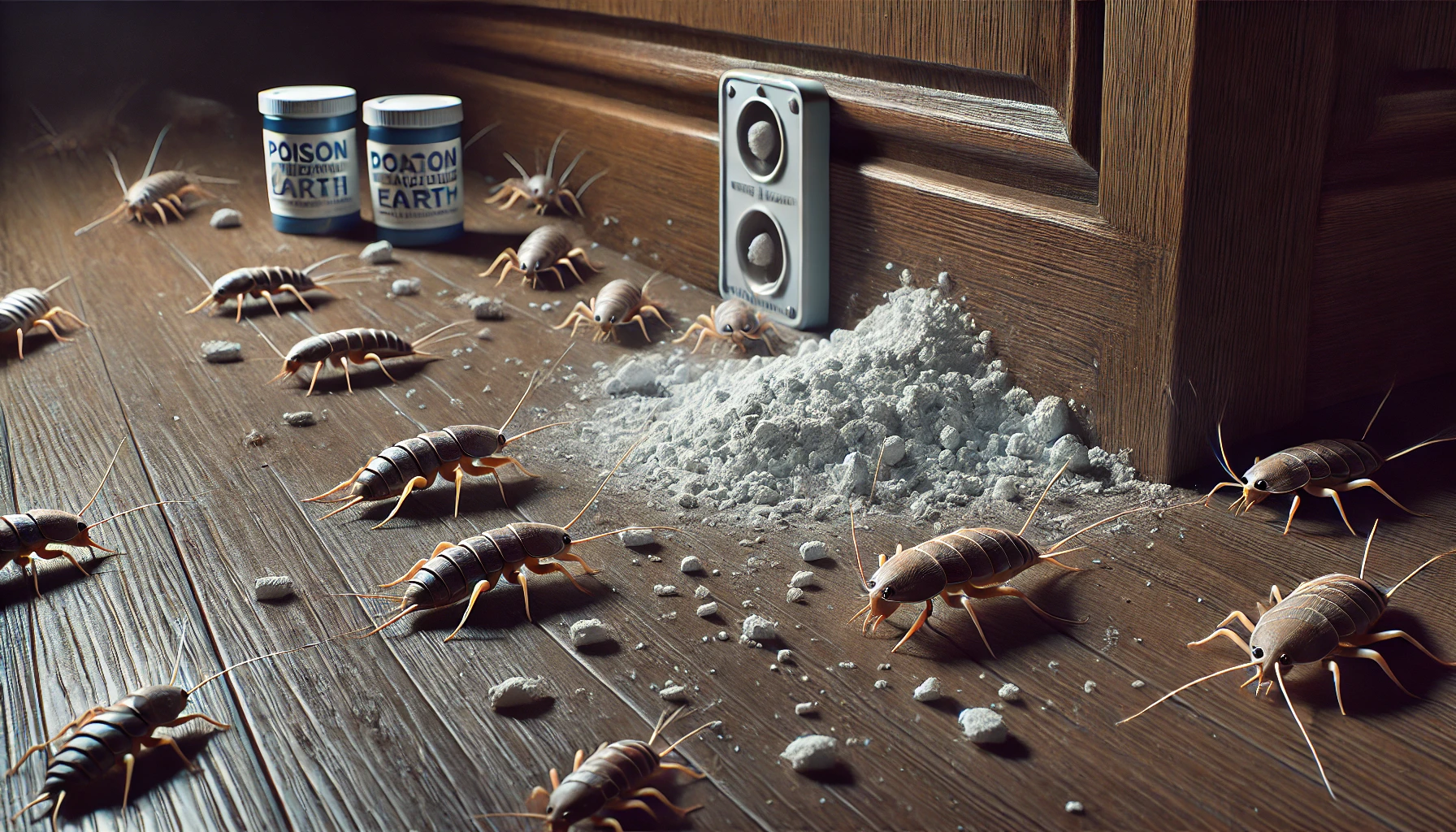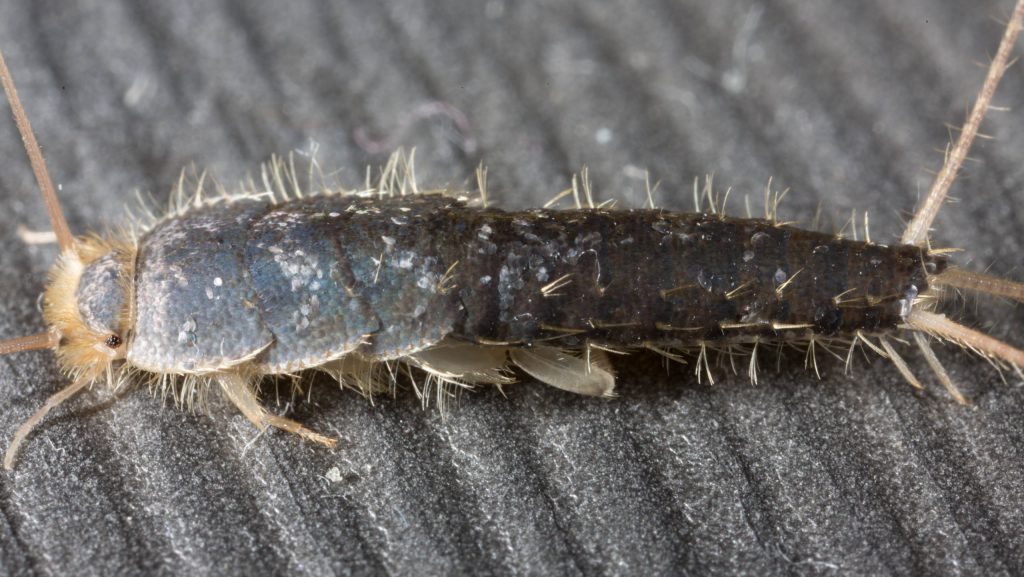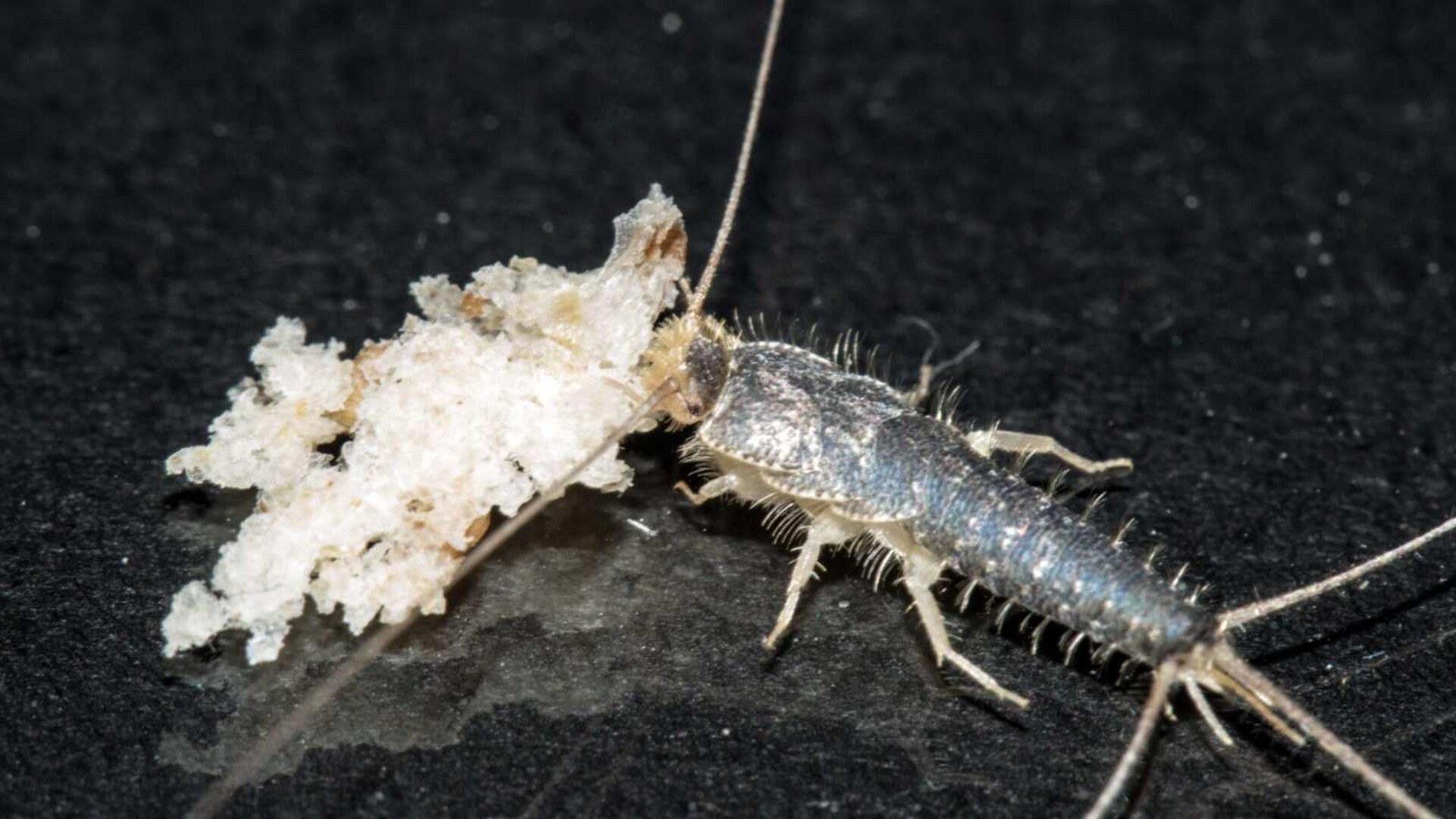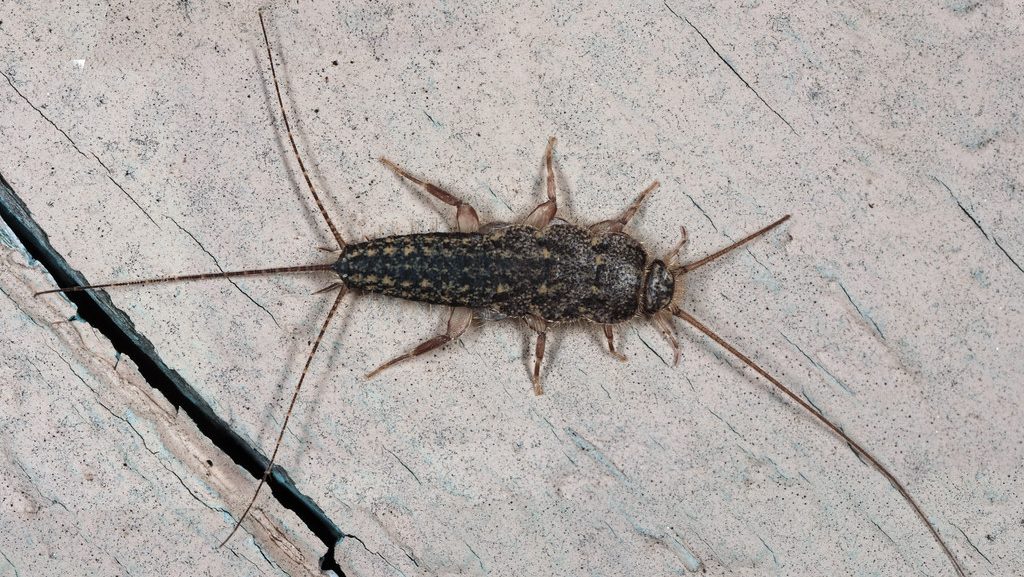Key Takeaways
- Reduce humidity: Silverfish thrive in moist environments. Use dehumidifiers and fix leaks to make your home less appealing to them.
- Keep your home clean and organized. Silverfish are attracted to garbage, paper, and fabrics. Declutter and vacuum regularly.
- Use traps and insecticides: Sticky traps, diatomaceous earth, and boric acid can help eliminate silverfish.
- Seal entry points: Close up cracks, gaps, and holes in your home’s exterior to prevent silverfish from entering.
- Store food properly: Keep dry foods in airtight containers and clean up crumbs and spills.
 Silverfish are common household pests that often go unnoticed due to their nocturnal habits. Though they don’t pose a direct threat to humans, they can cause significant damage to paper, books, wallpaper, and even fabrics. If you’ve noticed these tiny, silvery creatures scurrying across your bathroom floor or kitchen cabinets, you’re likely wondering how to eliminate silverfish. This guide will walk you through the best methods to get rid of silverfish and keep them from coming back.
Silverfish are common household pests that often go unnoticed due to their nocturnal habits. Though they don’t pose a direct threat to humans, they can cause significant damage to paper, books, wallpaper, and even fabrics. If you’ve noticed these tiny, silvery creatures scurrying across your bathroom floor or kitchen cabinets, you’re likely wondering how to eliminate silverfish. This guide will walk you through the best methods to get rid of silverfish and keep them from coming back.
Why Are Silverfish a Problem?
Silverfish may seem harmless, but they can become a huge trouble due to their destructive feeding habits. They are attracted to starchy materials such as paper, glue, and fabrics, making books, wallpaper, and clothing particularly vulnerable. Silverfish can also contaminate food sources if they get into your pantry, feeding on grains, flour, and other dry goods. Their rapid reproduction means that a small problem can quickly grow into a full-blown infestation.

Not getting a solution?
Get your free pest control estimate today!How to Eliminate Silverfish
Getting rid of silverfish requires a combination of methods that address both the infestation itself and the conditions that allowed it to happen in the first place. Here are several effective ways to eliminate silverfish from your home: 1. Reduce Humidity Silverfish thrive in moist, humid environments. This is why they are often found in bathrooms, basements, and kitchens. Reducing the humidity in these areas can make your home less appealing to silverfish.Start by using dehumidifiers in damp areas like basements and attics. Make sure bathrooms and kitchens are well-ventilated during and after showers or cooking. If you have a leak or condensation problem, repair it immediately to prevent excess moisture from accumulating.
In addition to using dehumidifiers, you can also try placing silica gel packets or moisture absorbers in closets, cabinets, and other areas where silverfish might hide. These products will help keep the air dry, making it less hospitable for silverfish. 2. Clean and Declutter Silverfish are attracted to dark, cluttered spaces where they can find food sources like paper and fabrics. Regular cleaning and decluttering can help eliminate hiding spots and food sources for these pests.
Start by going through storage areas such as closets, attics, and basements. Remove any piles of newspapers, magazines, or cardboard boxes, as these are prime feeding spots for silverfish. Vacuum regularly, especially in corners, behind furniture, and along baseboards, where silverfish might be hiding. Be sure to clean up food crumbs and spills, particularly in the kitchen and pantry. The cleaner and more organised your home is, the less appealing it will be to silverfish. 3. Use Traps Traps are an effective way to control a silverfish infestation. You can purchase sticky traps designed for silverfish from most hardware or pest control stores. These traps are typically placed in areas where you’ve noticed silverfish activity, such as in bathrooms, kitchens, or basements. The insects will get stuck in the trap and be unable to escape.
Diatomaceous earth is another option for treating silverfish. This natural powder is made from fossilised algae and works by dehydrating insects. Sprinkle diatomaceous earth along baseboards, corners, or under appliances where silverfish are likely to travel. Be sure to use food-grade diatomaceous earth, as it’s safe for use around pets and children. 4. Seal Entry Points Silverfish often enter homes through cracks and gaps in walls, floors, or foundations. Sealing these entry points can help prevent new silverfish from making their way inside.
Start by inspecting the exterior of your home for any gaps around windows, doors, or the foundation. Use caulk to block any cracks or openings you find. Check the weather stripping around doors and replace it if necessary.
Indoors, inspect baseboards, floorboards, and areas where pipes enter the home. If you find gaps, seal them with caulk or expanding foam. The fewer access points silverfish have, the harder it will be for them to infest your home.
 5. Chemical Treatments
If you’re dealing with a large silverfish infestation, try using chemical treatments. Insecticides that contain boric acid are particularly effective against silverfish. Boric acid interferes with the insect’s digestive system, ultimately killing them.
5. Chemical Treatments
If you’re dealing with a large silverfish infestation, try using chemical treatments. Insecticides that contain boric acid are particularly effective against silverfish. Boric acid interferes with the insect’s digestive system, ultimately killing them.Apply boric acid powder in areas where you’ve noticed silverfish activity, such as along baseboards, cracks, or under appliances. Be careful when using boric acid, as it can be harmful if ingested. Always follow the manufacturer’s instructions when applying chemical treatments.
Commercial sprays and powders specifically designed to target silverfish can also be applied to infested areas for more immediate results. However, it’s important to remember that while chemical treatments can be effective, they should be combined with other methods, such as reducing moisture and sealing entry points, to achieve long-term control.

How to Prevent Silverfish from Returning
Once you’ve eliminated silverfish from your home, it’s important to take steps to ensure they don’t come back. Preventative measures can help maintain a silverfish-free environment.1. Control Moisture Levels
Since silverfish are attracted to moisture, keeping your home dry is the best way to prevent them from returning. Keep checking for leaks in pipes, roofs, and windows, and repair any issues as soon as possible. Use a dehumidifier in areas that tend to stay damp, like basements and bathrooms.Ensure that your home is well-ventilated, especially in areas where humidity tends to build up. Run exhaust fans during activities like showering and cooking, and open windows when possible to allow air to circulate.
2. Store Food Properly
Proper food storage is essential for keeping silverfish away. Store dry foods like cereals, flour, and grains in airtight containers. Avoid using cardboard boxes or paper packaging, as silverfish can easily chew through these materials. Instead, opt for plastic or glass containers with tight-fitting lids. In addition to storing food properly, keep your kitchen clean.3. Declutter Regularly
Silverfish love dirty areas where they can hide and find food. Regularly cleaning your home will make it less attractive to silverfish. Go through old papers, books, and magazines, and recycle or dispose of items you no longer need. If you must store papers or clothes, keep them in sealed plastic bins instead of cardboard boxes.Keeping your home organised and clutter-free will reduce the number of places silverfish can hide. If you feel things have gotten out of control, contact pest control professionals. Our team can tailor a plan to protect your home effectively.





